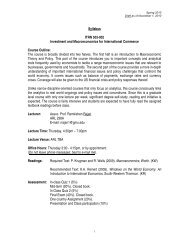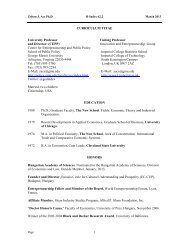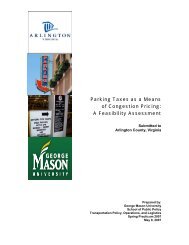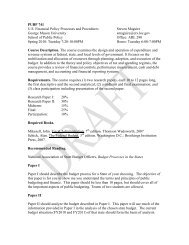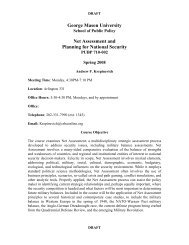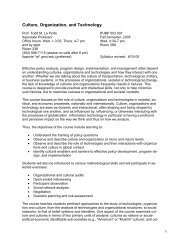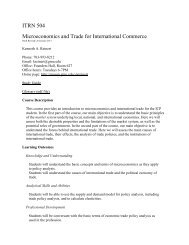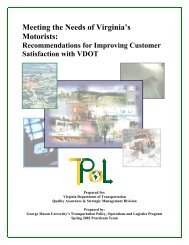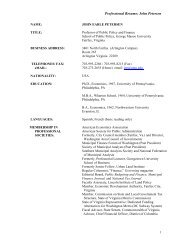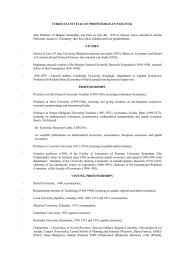Cost Benefit Analysis of Washington-Richmond High-Speed Rail
Cost Benefit Analysis of Washington-Richmond High-Speed Rail
Cost Benefit Analysis of Washington-Richmond High-Speed Rail
Create successful ePaper yourself
Turn your PDF publications into a flip-book with our unique Google optimized e-Paper software.
<strong>Cost</strong> <strong>Benefit</strong> <strong>Analysis</strong> <strong>of</strong> <strong>Washington</strong>-<strong>Richmond</strong> <strong>High</strong>-<strong>Speed</strong> <strong>Rail</strong> Spring 2010<br />
40<br />
Figure 6-1: Comparison <strong>of</strong> Projected Ridership (Build vs. No-Build Scenario)<br />
The model shows a ridership increase in the build scenario <strong>of</strong> 189% compared to the no-build scenario<br />
for the forecasted years <strong>of</strong> 2015, 2025 and 2035, assuming a 8% increase to 2035 (Table 4). The nobuild<br />
scenario would take an additional 25 years before reaching the forecasted levels <strong>of</strong> the 2015 build<br />
ridership forecast.<br />
The difference in ridership between the build and no-build scenarios is used in the analysis to calculate<br />
some <strong>of</strong> the costs and benefits <strong>of</strong> the project. The projected ridership will also be used to calculate the<br />
build scenario AVMT on the I-95 corridor. These two measures form the basis for the majority <strong>of</strong> the<br />
estimates for costs and benefits including the operating costs, external costs, external benefits and<br />
travel time benefits. For the complete process used to set up the model and calculate projected<br />
ridership and AVMT, see Appendix B.<br />
6.3 Data Sources and Methodology<br />
Various techniques and models have been developed to predict the levels <strong>of</strong> use (i.e., ridership). One<br />
simple method uses past trends and applies them to the future. Other methods predict yearly ridership<br />
solely on one variable, such as the population. The gravity model incorporates observation-based<br />
variables and interactions between them to predict future interactions. The use <strong>of</strong> this model<br />
anticipates ridership in the build scenario between city pairs randomly selected in the HSR Northeast<br />
Corridor. The gravity model, compounded by other methods <strong>of</strong> analysis, provides a more<br />
comprehensive predictive model that result in a higher confidence <strong>of</strong> ridership forecasts. The results<br />
from this model provide key elements <strong>of</strong> knowledge, such as amount and type <strong>of</strong> demand, about<br />
resource requirements for future management planning and are a critical factor in the decision-making<br />
and design process.



